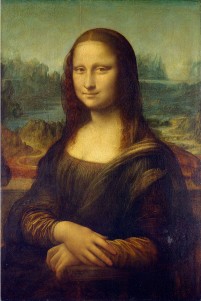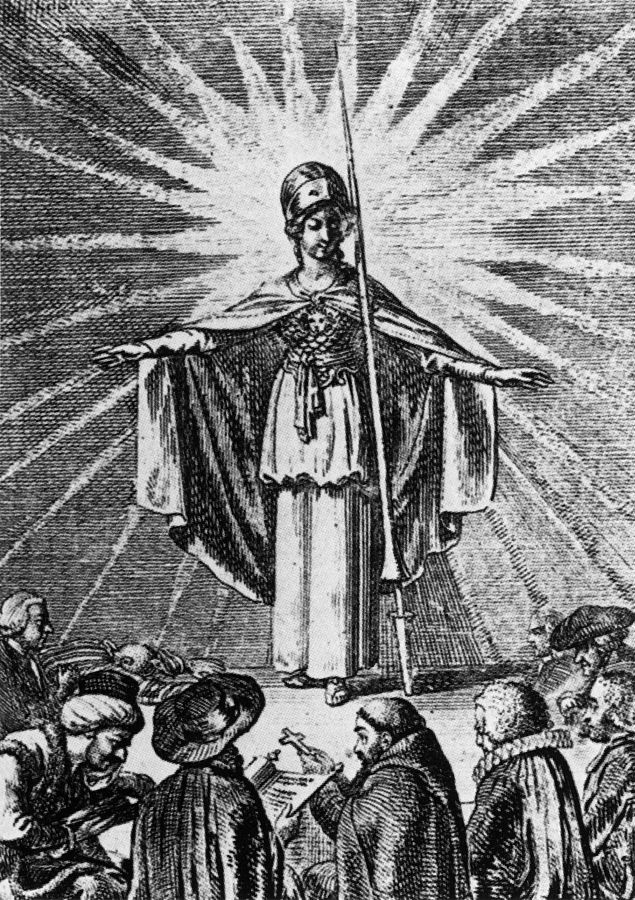The Occult Philosophy in the English Renaissance
Article By Julian Scott
 The official history we learn at school or read in most books gives us only a partial view of reality and leaves out things that do not fit into the prevailing view. A case in point is the English Renaissance and its links with occultism. The standard history of that age tells us of the exploits of Sir Francis Drake and Sir Walter Raleigh, of the glittering court of Elizabeth I and of how the invincible Armada was lost beneath the waves. We hear little, however of the occult studies of Raleigh and even less of the Queen’s passionate interest in such matters; and the occultism of Dr. John Dee is viewed as a kind of aberration, a somewhat eccentric excursion of a great mathematician and scholar.
The official history we learn at school or read in most books gives us only a partial view of reality and leaves out things that do not fit into the prevailing view. A case in point is the English Renaissance and its links with occultism. The standard history of that age tells us of the exploits of Sir Francis Drake and Sir Walter Raleigh, of the glittering court of Elizabeth I and of how the invincible Armada was lost beneath the waves. We hear little, however of the occult studies of Raleigh and even less of the Queen’s passionate interest in such matters; and the occultism of Dr. John Dee is viewed as a kind of aberration, a somewhat eccentric excursion of a great mathematician and scholar.
A remarkable book written in the 1970s attempted to correct that overly partial and incomplete vision of history: it is one of the works of the great scholar Frances W. Yates (d. 1981) and is entitled “The Occult Philosophy in the Elizabethan Age”. According to this author, “the dominant philosophy of the Elizabethan age was the occult philosophy”. Other books by Yates in the same line are Giordano Bruno and the Hermetic Tradition and The Rosicrucian Enlightenment. Yates unequivocally demonstrates the pervasive influence of occult philosophy in the Renaissance, by revealing that practically all the great figures of the Renaissance were aware of and actively interested in Hermeticism, Cabala, magic and Neoplatonic philosophy. In Yates’ view, this occult philosophy was even more of a driving force in the Renaissance than the rational Humanism of Erasmus.
What is the Renaissance?
The word itself is French for ‘rebirth’ and, historically, it refers to the rebirth of interest in the classical world and its knowledge that began in Florence, Italy, around 1400. An excellent introduction to the different currents of thought that gave rise to the cultural renaissance of Europe can be found in The Spirit of the Renaissance by Fernando Schwarz and Isabelle Ohmann, which is available from NA. The Renaissance world view differed fundamentally from the medieval world view in that it saw man as a being of almost infinite, divine potential, rather than as a creature subject to an omnipotent God.
The English Renaissance
The English Renaissance began at least 100 years later than its Italian counterpart. It started in the court of Henry VIII, with humanists like Thomas More (the author of Utopia) and the composer Thomas Tallis, and reached its flowering in the Elizabethan Age (1558-1605). Its greatest productions were not in art or architecture – as in Italy – but in literature (drama and poetry) and music. The greatest name, of course, is Shakespeare, but there were other major poets such as Edmund Spenser, whose Faerie Queene is said by Yates to be full of occult and Neoplatonic philosophy.
Elizabeth I was an open, enthusiastic person with a love of knowledge. Her tutor had been the great Humanist, Robert Ascham, but she also had a great interest in occult matters. When John Dee, the great occultist of the era, wrote his major esoteric work, the Monas Hieroglyphica, she invited him to come and explain it to her personally. She encouraged a circle of courtiers – around the figure of Sir Philip Sidney – to cultivate the Renaissance spirit at her court.
Reformation and Counter-Reformation
Alongside the Renaissance, a religious movement known as the Reformation began in the early 16th century with Martin Luther in Germany. It attacked the corruption and idolatry of the Catholic church and promoted a return to the values of early Christianity and the word of the Bible. Because of the threat this posed to the established order, previously dominated by the Catholic church, a Catholic movement called the Counter-Reformation arose and gave rise to bloody confrontations and religious wars between Catholics and Protestants. One of the most infamous incidents was the so-called St. Bartholomew Day Massacre in Paris in 1572, in which thousands of Huguenot protestants were murdered. For an excellent depiction of this era, see the French film La reine Margot (Queen Margot).
In England, the Counter-Reformation came in the form of the 5-year reign (1553-1558) of Queen Mary (‘Bloody Mary’ as she was known by her Protestant subjects), the daughter of Henry VIII and his Spanish wife Catherine of Aragon, and wife of the arch-Catholic King Philip of Spain. She died in 1558, giving rise to the accession of Elizabeth I.
What is the Occult Philosophy?
At its root is the belief that all knowledge comes from a single source, which the Renaissance philosophers called the Prisca theologia or ‘ancient theology’. In the words of Peter French, author of an excellent biography of John Dee, “Religious Hermeticism did away with dogmatic theology, stressed the mystical unity of all religions and the oneness of God, and emphasized pristine Christianity and man’s innate knowledge of the Divinity”. There was also a firm conviction that the human being can gain divine knowledge through spiritual exercises, magical practices, symbols, alchemy, astrology, and the investigation of nature and its laws. In other words, through the knowledge of Man, Nature and God.
This philosophy, based as it is on the unity of knowledge, gave rise to a great spirit of tolerance which we can see in all of its exponents: from Queen Elizabeth – who believed (like the ancient Romans) that what goes on in a man’s soul should be his own concern, as long as he conforms to the external rites required by the state – to Sir Walter Raleigh and, most especially, to philosophers like John Dee and Giordano Bruno. The latter asserted that it is not a man’s beliefs that are important, but how he lives his life and treats his fellow human beings.
The fascinating figure of John Dee
Born in 1527, of Welsh ancestry and said to be a descendant of the ancient kings of Britain, Dee rose quickly to prominence because of his wholehearted dedication to knowledge from an early age. A brilliant mathematician, he travelled throughout Europe and was offered the Chair of Mathematics at the University of Paris at the age of 23 (which he declined). On his return to England he was appointed astrologer to Queen Mary (it seems that Catholics believed in astrology in those days), but in 1555 he was arrested on suspicion of plotting sorcery against the Queen and imprisoned. His cellmate was burnt at the stake, but Dee was able to prove his innocence and was released. However, all his life he was constantly having to fight off accusations of sorcery, which he strenuously denied. He did not deny his use of magic, but claimed that good magic was sanctioned by the Bible. By those who knew him he was recognised as a very good and honest man, but he had many enemies and public opinion, steeped in ignorance and superstition, always saw him as a sorcerer. At one time while he was out of the country, his house and library were ransacked by a mob and many of his valuable books were lost.
His occult and other studies were sanctioned and encouraged by Queen Elizabeth, without whose protection he would have been lost. However, towards the end of her reign, when there were increasing social and political problems, her protection weakened, and he eventually died in poverty and obscurity in the reign of James I, who was fanatically against all kinds of magic.
As well as being an occultist, he was an expert in navigation and cartography. He drew a map of the coastline of North America (based on conversations with an experienced pilot), which was used by Sir Walter Raleigh for his expedition to found Virginia, and is now in the British Museum. Scholars and navigators used to visit him at his house by the Thames in Mortlake, Surrey, where they could consult him on philosophical and practical questions and peruse his enormous library, consisting of over 4,000 books and manuscripts. In those days the University of Cambridge only had 451 books and manuscripts in its library!
His passion for knowledge led him to write a petition to Queen Mary, exhorting her to found a Royal Library, which would become a repository for all important works from around the world – a kind of project like the Library of Alexandria, or the British Library. He also asked her to protect ancient monuments, as he regarded the knowledge of the past as extremely valuable. Unfortunately, his petition was ignored.
He was a great mathematician and edited the first English translation of the works of Euclid, for which he wrote a famous Preface, which is regarded as his “philosophical manifesto”. In it he sets out the relevance of mathematics to all the arts and sciences, stressing the importance of numbers as the key to all knowledge, following in the footsteps of his philosophical hero “the divine Plato”.
Dee was a mentor to practically all the major figures of the time. He had been tutor to Robert Dudley, the Earl of Leicester, who was Queen Elizabeth’s lifelong friend. He was also a major influence on Leicester’s nephew, Sir Philip Sidney, an exceptional poet, diplomat and soldier. Sidney was at the centre of the so-called ‘Sidney Circle’ of poets and philosophers at Elizabeth’s court, the same circle that welcomed Giordano Bruno during his 2-year stay in London (1583-1585). Another member of this circle, the poet Edmund Spenser, is referred to by Yates as ‘the poet of Dee’s philosophy’- note, for example, the suggestively Neoplatonic title of one of his poems: Hymn to Heavenly Beauty.
Yates also claims that the influence of the occult philosophy can be found in Shakespeare’s works. She suggests, for example, that Berowne in Love’s Labour’s Lost represents Giordano Bruno; in The Merchant of Venice there is a significant speech about the Music of the Spheres; King Lear she believes to represent Dee in his old age, when he was rejected by all; and Prospero in The Tempest is regarded as a vindication of John Dee as a good magician.
Dee was also in close touch with the circle of the Earl of Northumberland (the so-called ‘Wizard Earl’), which had more of a scientific-technical bent than the Sidney Circle. Chief among its members was Sir Walter Raleigh, but it also included the brilliant mathematician Thomas Hariot and the poet George Chapman, author of The Shadow of Night. There is speculation that these men formed a ‘school’ dedicated to occult and scientific studies posthumously known as the ‘School of Night’.
According to Frances Yates, Dee was also instrumental in promoting the idea of an enlightened empire that would defeat the Papist forces of the old world and usher in a new age of tolerance and peace, inspired by a Hermetic-Christian religion. The forces against such a project were in the end too strong, but we can see the ideas outlined in his work General and Rare Memorials Pertaining to the Perfect Art of Navigation, where he sets out the principles of peace and security on which it would be based.
Yates also says that the cult of Elizabeth, the Virgin Queen, symbolized by the mythical figure of Astraea, was the positive myth for this new era that would put an end to the ignorance and intolerance of the times and would become a centre of chivalry, scientific and practical advancement, art and philosophy. It is an ideal that is very much represented in the ethos of many of Shakespeare’s plays. According to Greek legend, Astraea was an immortal who presided over an age of wisdom but left the earth because of the wickedness of humanity. Inhabiting the constellation Virgo, the legend says that she will return to usher in a new Golden Age, a Utopia.
With all these examples we can see what a positive effect the occult philosophy can have on the society around it, when the time is right and its exponents are determined and intelligent enough to achieve their aims. Although the ‘Elizabethan experiment’ seemed to come to nothing in the end, Yates’s sequel book, The Rosicrucian Enlightenment, tells of a further attempt to raise philosophy to an influential position in society. This too ended in ‘failure’, which brings to mind what JAL says in his work Introduction to Eastern Wisdom: “If the civilizing impulse has not been extinguished a thousand times, it has been because the Great Brotherhood blew on its embers a thousand and one. As patient as nature, as loving as the gods that they are, as intelligent as all the sages of mankind put together, the members of that mysterious fraternity will never slacken in their efforts until they can count the last of mortals as their equal… But human beings still need to experience, to change and to burn a lot of fruits of action before they can form part of a society based on freedom, cooperation and mutual affection, which is the indispensable climate for the development of the species”
Moreover, we cannot only look at the ‘failure’ of these attempts, because in the process these movements produced marvels of culture, advances in science and, above all, sowed the seeds of tolerance and peace in the soul of humanity. One day, after repeated efforts, these seeds will flower, and bring about another enlightened age.
Image Credits: By Galerie de tableaux en très haute définition | Wikimedia Commons | CC BY PD
The entity posting this article assumes the responsibility that images used in this article have the requisite permissionsImage References
By Galerie de tableaux en très haute définition | Wikimedia Commons | CC BY PD
Permissions required for the publishing of this article have been obtained




What do you think?